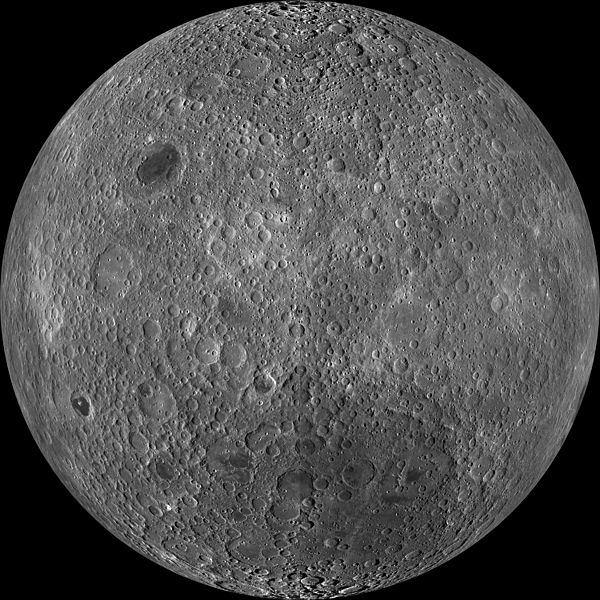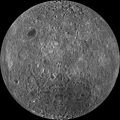Beureukaih:Moon Farside LRO.jpg

Seunipat hasé peusaneut: 600 × 600 piksel Resolusi la'én: 240 × 240 piksel | 480 × 480 piksel | 768 × 768 piksel | 1.024 × 1.024 piksel | 2.048 × 2.048 piksel | 18.000 × 18.000 piksel.
Beureukaih aseuli (18.000 × 18.000 piksel, rayek beureukaih: 85,34 MB, MIME jeunèh: image/jpeg)
Riwayat beureukaih
Neuteugon bak uroe buleuen/watèe keu neu-eu beureukaih nyoe ‘oh watèe nyan.
| Uroe buleuen/Watèe | Beuntuk ubeut | Dimènsi | Ureueng ngui | Beunalaih | |
|---|---|---|---|---|---|
| jinoë hat | 20 Buleuen Lhèe 2014 06.47 |  | 18.000 × 18.000 (85,34 MB) | Huntster | High resolution mosaic. |
| 9 Buleuen Peuet 2011 11.12 |  | 1.600 × 1.600 (1,44 MB) | Bubba73 | {{Information |Description ={{en|1=Far side of the Moon, by NASA's Lunar Recon. Orbiter}} |Source =http://apod.nasa.gov/apod/image/1104/farside_lro1600.jpg |Author =NASA - LRO |Date =2011? |Permission = |other_versions = } |
Seuneungui beureukaih
Hana laman nyang na meupawôt u beureukaih nyoe.
Neungui beureukaih global
Wiki laén di yup nyoe geungui beureukaih nyoe:
- Seuneungui bak af.wikipedia.org
- Seuneungui bak az.wikipedia.org
- Seuneungui bak be.wikipedia.org
- Seuneungui bak bjn.wikipedia.org
- Seuneungui bak bn.wikipedia.org
- Seuneungui bak bs.wikipedia.org
- Seuneungui bak ca.wikipedia.org
- Seuneungui bak cs.wikipedia.org
- Seuneungui bak de.wikipedia.org
- Seuneungui bak en.wikipedia.org
- Seuneungui bak en.wikibooks.org
- Seuneungui bak en.wikiversity.org
- Solar System, technical/Moon
- User:Marshallsumter/Radiation astronomy2/Visuals
- Draft:Original research/Planets
- User:Marshallsumter/Radiation astronomy2/Visuals/Quiz
- User:Marshallsumter/Rocks/Rocky objects/Astronomy
- User:Marshallsumter/Radiation astronomy/Courses/Principles/Hourly 2
- User:Marshallsumter/Radiation astronomy/Courses/Principles/Midterm quiz
- User:Marshallsumter/Radiation astronomy/Courses/Principles/Final quiz
- Titan/Quiz
- User:Marshallsumter/Rocks/Rocky objects
- Draft:Enceladus/Quiz
- Moon/Quiz
- Stars/Sun/Heliology/Quiz
- Earth/Quiz
- Stars/Reds/Quiz
- Draft:Dione/Quiz
- User:Marshallsumter/Radiation astronomy2/Scattered disks/Quiz
- User:Marshallsumter/Radiation astronomy1/Kuiper belts/Quiz
- Liquids/Liquid objects/Moon
- User:Marshallsumter/Radiation astronomy/Craters
- Seuneungui bak es.wikipedia.org
Eu leubèh le neungui ban dum nibak beureukaih nyoe.

